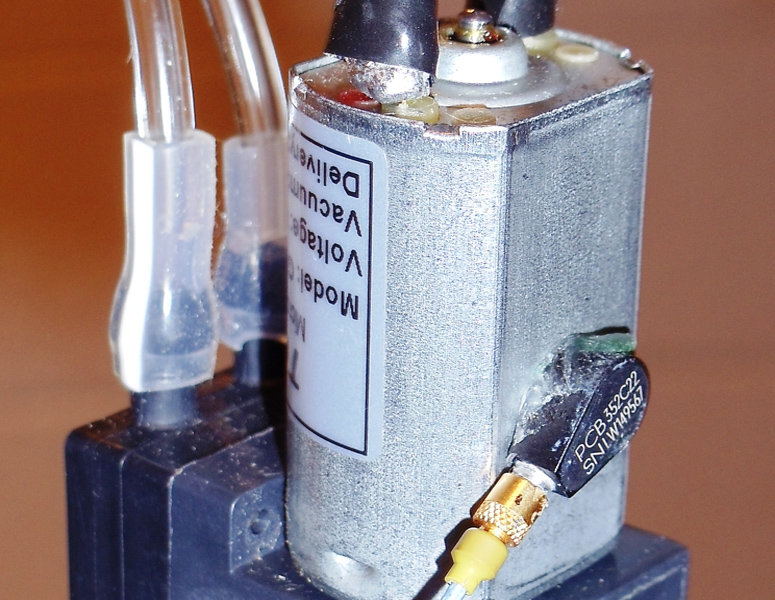Acentech conducted a noise audit of a prototype vacuum-assisted biopsy device, consisting of a motor/pump assembly connected with tubing to a separate handle/needle assembly.
As a result of the noise audit, Acentech developed and evaluated candidate noise reduction strategies, and reported on findings. Our findings led to two approaches for reducing the total radiated sound from the unit. The first approach recommended was to place the motor/pump assembly within a flexible pouch/enclosure designed to attenuate the (primarily) high frequency noise radiated directly from the motor/pump body.
The second was to use a small muffler designed to attenuate the remaining, largely lower frequency, periodic airflow-related pulsation noise emitted primarily out the pump outlet tube. These two approaches are complimentary in the sense that such an enclosure will be most effective at frequencies above 1 kHz or so, which is where most of the directly radiated motor/pump noise is, and a reasonably sized muffler will be most effective at attenuating the other noise source, which is primarily below 1 kHz. A demonstration application of these two additions resulted in a 15 to 22 dB reduction of the overall A-weighted noise level, depending on the operating mode of the device.
A reverberant room and the noise audit method were used to characterize the total sound power radiated by the various components of the device. We also used vibration measurements on the pump body to determine that its noise was due to a combination of imbalance forces and valve impacts. The size of the motor/pump assembly limits the noise radiated to the higher frequencies observed in the acoustical measurements. In addition, a muffler design procedure that was developed in-house was used to help configure small (< 2 cubic inches) single- and dual-chamber mufflers that were evaluated and found to provide very audible reductions (about 8 dB) of the pulsation noise emitted from the pump outlet.
If the pump makes contact with its surrounding enclosure, then there is the potential for increased noise due to vibration transmission from the pump into the enclosure. While using soft and flexible enclosure walls will limit this effect, such an enclosure can still be an efficient radiator of sound at lower frequencies. This was observed to be the case here, but was remedied by the use of a compliant isolation material inserted between the pump and the enclosure housing.
The results and recommendations obtained from this project will be applied to the design of a small muffler and a pouch to hold the production motor/pump assembly, as our findings have indicated that these two components, if designed correctly, provide the potential for substantial reduction of the noise generated by this medical product. The pouch can also contain the muffler itself, which enables the final, separate needle assembly to be designed without the need to accommodate an extra component.
Download the PDF project summary here.
